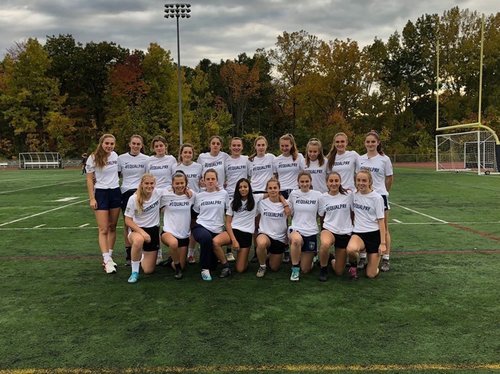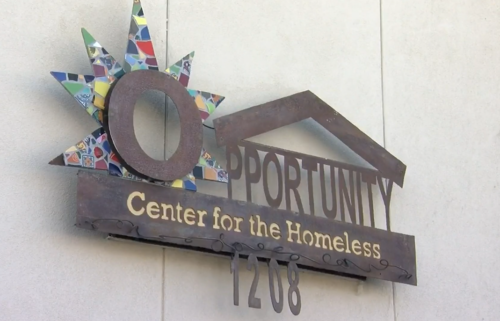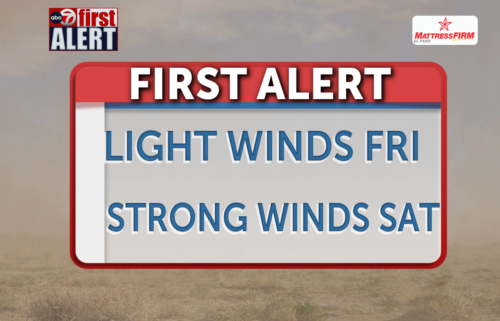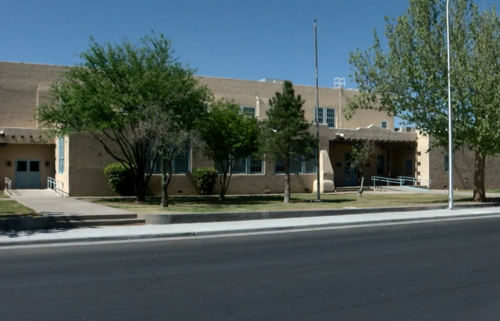Narcan on hand: How one police department’s Narcan program saved hundreds of lives

This is the second story in a three-part series on the use of Narcan by law enforcement.
TEMPE, Ariz. — When Officer Dave Hanson trains police officers on how to use Narcan, he starts by showing body camera footage from the first time a Tempe police officer used the medication on a local resident.
The grainy video begins with a 23-year-old white man lying face down on a bed. He appears to be dead: silent and still with no visible signs of life. A police officer flips the man onto his back, moves him down to the floor and sprays Narcan into his nostril. Nothing happens, and the officer begins chest compressions on the man for a few minutes, before spraying Narcan into the man’s nostril again. The man begins to move, slowly regaining consciousness.
It was the first of 174 lives saved by the Tempe Police Department using Narcan, since they began requiring that all patrol officers carry it in February 2020. The actual number of lives saved through the program is even greater, because after police encounter someone overdosing on opioids, they initiate a behavioral health response that connects the person to recovery resources and provides them with additional supplies of Narcan to have on hand for themselves or other people who use drugs.
“When we first started, we thought … we're just going to Narcan a bunch of homeless guys,” said Hanson, a veteran police officer and the Narcan program coordinator for the Tempe PD. Hanson has been with the department for 22 years, first as a patrol officer and then as a detective.
But that first lifesaving overdose response eroded the preconceived notions Hanson had about the people who would need Narcan, an opioid overdose reversing medication that is increasingly used by law enforcement nationwide amid surging overdose deaths.
Read part 1: EPPD patrol officers don’t carry Narcan amid skyrocketing overdose deaths.
“Our first kid … lives in a super nice house down here in South Tempe,” Hanson said. “Family’s in his life, he's got other issues going on. Not necessarily a drug addict, has a good support system with his family around him, just he was more a suicide attempt.”
Hanson has watched other officers in the department shift their stereotypes about people who use drugs too.
“We were like, ‘Well, wait a minute, they're not just homeless people,’” he said.

The Tempe Police Department’s collaborative community approach for responding to opioid crisis incidents touts successes beyond saving lives -- it’s a framework that Arizona State University researcher Michael White argues is needed to effectively and comprehensively respond to the nation’s opioid crisis.
“Narcan is not enough,” White and his coauthors wrote in a 2021 research study analyzing the effectiveness of the Tempe PD’s program, published in the American Journal of Criminal Justice. “The opioid crisis is at its core a multidisciplinary, multisystem problem, and an effective response to the crisis requires collaboration across those various systems.”
Like El Paso, Tempe has seen a dramatic increase in opioid overdose deaths in recent years. The Tempe Police Department responded to the problem with an innovative new program, while much of the El Paso Police Department’s opioid crisis response protocol has remained unchanged.
Rob Ferraro, president of the Tempe PD police union and the department’s Crisis Intervention Team training coordinator, said he hopes other police departments will use the Tempe PD Narcan program as a model.
“In the long run, it's about helping people and saving people's lives right?” Ferraro said. “So you would hope that (other police) departments would wanna do something like this and try and replicate it, 'cause it's a good thing. And that's why we all signed up for this job, is to help people.”
How the program works
The plan for the Tempe PD’s Narcan program was first jotted down on a bar napkin at a national behavioral health conference in Nashville in 2019, Nick Margiotta explained, his eyes aglow as he described the program’s success.
Margiotta, a retired Phoenix police officer who formerly ran Maricopa County’s Crisis Intervention Team training, works as a consultant for behavioral health providers including EMPACT-SPC, the behavioral health partner for the Tempe PD’s Narcan program.
“We’re sitting at a bar, talking about substance abuse, and we’re like ‘Hey are you guys carrying Narcan? Are you not carrying Narcan?’” Margiotta said, describing the conversation he had that night with Ferraro.
The Tempe PD ultimately received a $2 million grant from the Substance Abuse and Mental Health Services Administration, a federal behavioral health agency, to start the Tempe First-Responder Opioid Recovery Project in 2020.
The project entails training and equipping Tempe police officers to use Narcan, and includes a 24/7 Crisis Outreach Response Team that responds to overdose events and provides follow-up support for up to 45 days after the overdose. It’s a collaborative effort, involving police officers, social workers, researchers and peer counselors, with an ultimate goal of diverting people with addiction out of the criminal justice system and into behavioral health -- and saving lives in the process.
“We knew (that) cops rush into buildings, they perform CPR, they always are performing life-saving measures on folks. And they just do it instinctively,” Ferraro said. “So I was going to use my position to really push (the project) forward and make it happen.”
Ferraro said he wanted to address a “post-crisis gap” that was happening with overdoses, where law enforcement has an opportunity because they’ve made contact with someone in need of support services, but don’t follow up.
“Generally what would happen is the person would overdose, whether intentionally or not, and they’d get administered Narcan, usually by the Fire Department, and then they would go to the hospital,” he said. “They would get treated and then they would leave and then the cycle would continue along.”
He designed the program to be as seamless as possible for officers -- involving minimal paperwork and a quick phone call to a hotline staffed by the behavioral health workers -- so that they’d actually do it. Once an officer uses Narcan on an overdosed person, “it kicks a whole behavioral health process into action,” he said.

Convincing officers to use Narcan, especially those who are more “old school” has sometimes been difficult, Hanson said.
“I try to appeal to both sides,” he said. “If you're (a newer police officer) and you got into this job to help, ‘Here's a great way to help this person! This person’s dying, you Narcan them, and maybe they get some help from this program.
“If you're an old crusty (officer), you Narcan this dude, they get into the ambulance and they're breathing? Honestly, our paperwork is much, much less.”
How the program is changing officers’ perspectives about people who use drugs
White and a team of researchers at Arizona State University have been studying the program’s effectiveness since its launch, surveying hundreds of officers before and after the program was initiated. They found that there was a statistically significant increase in officer support for carrying the medication after receiving the training, and that there were significant increases in officer confidence and competence on how to handle an overdose incident.
“They were glad to be carrying Narcan, and they were significantly less concerned about getting sued, making a mistake, or accidentally hurting an overdose victim,” the researchers wrote in a summary of the survey’s findings.
Through the program, officer beliefs about the effectiveness of police-led efforts to connect people who use drugs with recovery services are changing too.
Out of the 174 people whose lives have been saved by Narcan administered by Tempe cops, around half are now engaged in substance abuse recovery services through the behavioral health follow-up program component, Ferraro said.
“That's like the true accomplishment of this whole thing, is that we've giving an opportunity to somebody to engage in recovery or get some help, as opposed to just arresting your way out of the problem,” Ferraro said.
When Hanson trains officers to use Narcan, he shows several bodycam videos of Tempe police officers saving lives with the medication: a homeless man brought back to life, laying on the sidewalk; a patrol car pulled over on the side of the road with a man overdosing in the backseat because he ingested all his drugs so the police wouldn’t find them. He was revived too. Hanson even shows a scene from the Quenton Tarantino film Pulp Fiction to dispel myths about what officers might encounter.
For Hanson, the program’s effectiveness is ultimately rooted in psychology.
“We’re not wired to have people die in front of us,” Hanson said.
The way the program is designed, officers have to carry Narcan but aren’t required to use it. That was intentional, he said, because “99.99% of officers at our department won't stand over someone who's dying, when you have a tool that you can use (to save their life).”
Feature image: The Tempe Police Department requires all officers to carry Narcan. (René Kladzyk / El Paso Matters)
This article first appeared on El Paso Matters and is republished here under a Creative Commons license.![]()




